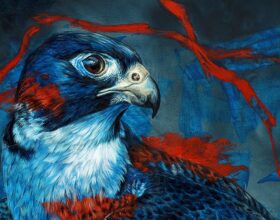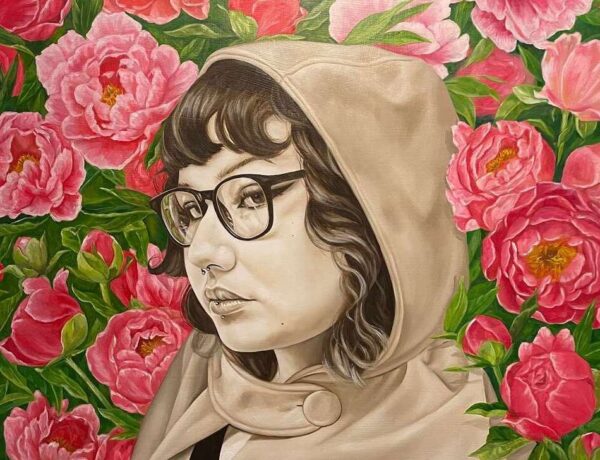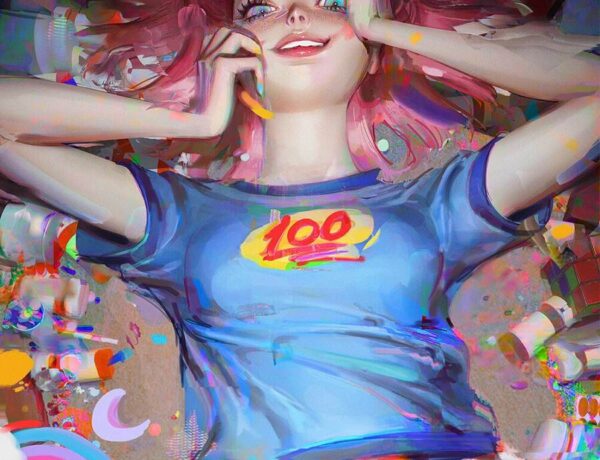Exclusive Interview With Entei Ryu, 3rd Prize Winner of the Yasha Young Projects Sculpture Award, 2023 Beautiful Bizarre Art Prize
The legend goes that long ago, during the creation of the Korean Peninsula, a tiger and a bear both prayed to the gods in hopes that they would be transformed into humans. The bear was greatly successful while the tiger sadly failed. However, all is not lost for the tiger. Many centuries later, the tiger finally gets to undergo its own exquisite transformation, finally getting the recognition it deserves in Entei Ryu’s sculpture “Metamorphosis”. This truly breathtaking sculpture is an ode to humanity, nature and how they intertwine. The women represents the soft warmth and complexity found within humanity which balances out the primal force and ferocity of nature depicted within the ancient tiger.
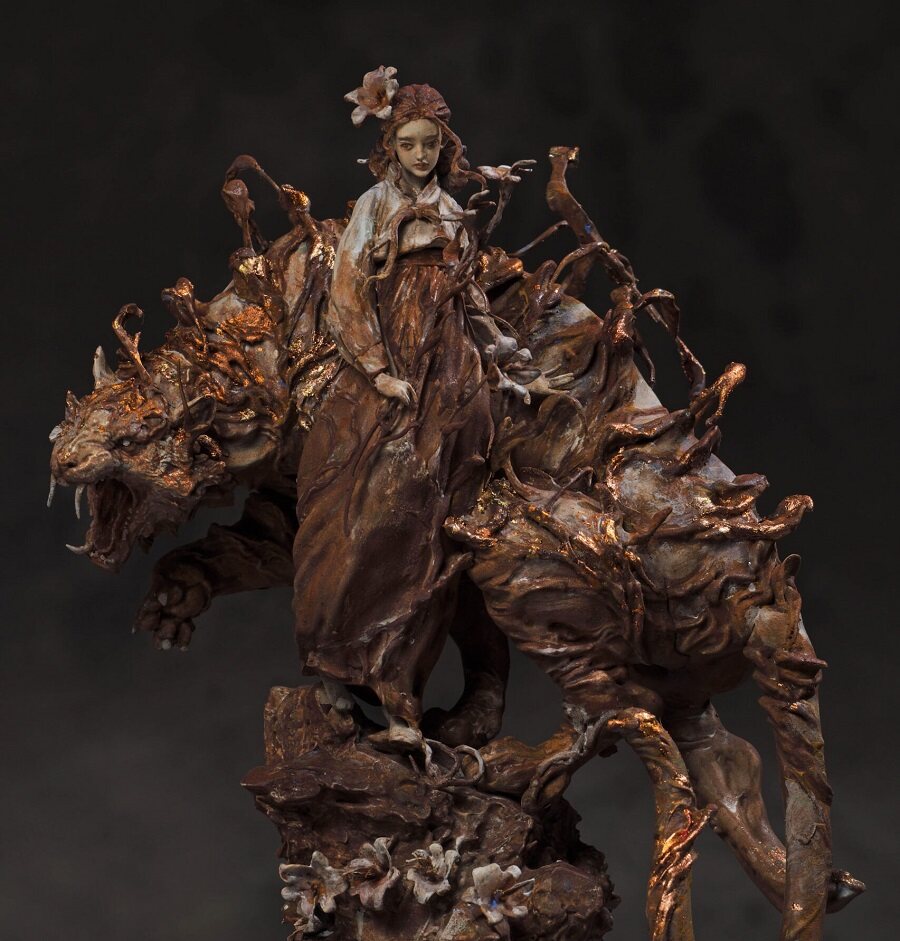
Resin, mineral pigments, whitewash, acrylic paint, copper foil, 32 x 24 x 17 cm.
3rd Prize Winner
Yasha Young Projects Sculpture Award Beautiful Bizarre Art Prize 2023
Entei Ryu is truly a jack-of-all-traits. The Japanese artist is a formally trained architect, earning her degree in the architecture department at the University of Tokyo. She spent over seven years studying architecture all across the globe but architecture isn’t her only forte as Ryu is also an artist, a sculptor and a concept designer who has created work for film and video games. In the past few years, Ryu has shifted from digital illustration to more traditional mediums including oils, acrylic, resin, clay and mineral pigment while also dabbling in jewellery and fashion design.
Her work explores fantastical worlds and rich character design all through a highly emotional, cultural and mythology based lens that is guaranteed to strike a chord with anyone viewing her work.
Most recently, Ryu found huge success submitting her work into the 2023 Beautiful Bizarre Art Prize where she won 3rd Prize in the Yasha Young Projects Sculpture Award for her sculpture “Metamorphosis”. “Metamorphosis” is inspired by ancient Korean myths and is made using a combination of resin, mineral pigments, whitewash, acrylic paint and copper foil and stands at a size of 32 x 24 x 17 cm.
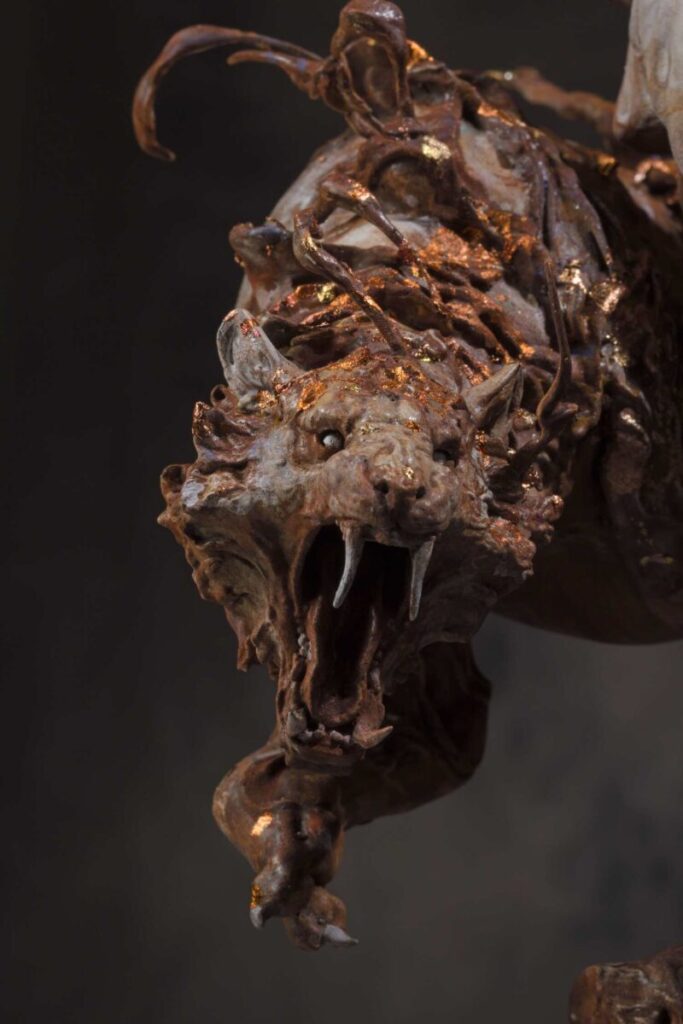
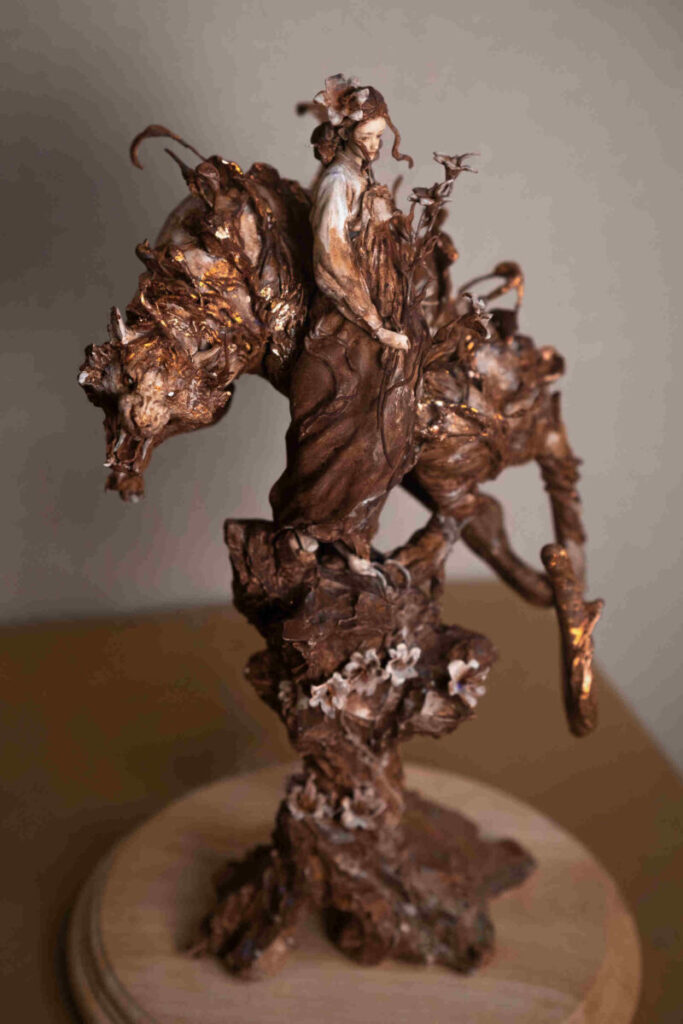

Over the past year or two, I’ve been pushing my boundaries and attempting to break into new artistic territory, so receiving recognition in the fine art field with this award is truly inspiring to me.
Interview with Entei Ryu
First of all, I want to say a huge congratulations to you on winning the 3rd Prize Yasha Young Projects Sculpture Award! What was your first reaction upon discovering that you had won?
Thank you for your congratulations. My first reaction upon learning about the award was disbelief — I felt incredibly happy and honored. Given that I haven’t received any formal art education, my profession is in architecture, and I work as a concept artist. Over the past year or two, I’ve been pushing my boundaries and attempting to break into new artistic territory, so receiving recognition in the fine art field with this award is truly inspiring to me. Thanks once again.
Why did you enter the Beautiful Bizarre Magazine Art Prize?
I had been following Beautiful Bizarre Magazine on social media for quite some time, so I was already aware of this award. Later on, many artists whose work I admire participated in this competition, which encouraged me to join as well. Participating in the competition was, in itself, a way to challenge myself and has been a valuable learning experience.
You work in so many different art fields including concept art, sculpture, illustration and more! Why did you decide to go with sculpture when submitting to the Art Prize?
I started painting when I was three or four years old, and later in college, I spent seven years studying architecture. Sculpture is an art form I only began exploring in the last three or four years. I feel that sculpture, in a way, is a combination of my love for painting and architecture. It’s like “painting in space” or “constructing with the instincts of painting.” Sculpture offers more possibilities in terms of materials and expressions, which satisfies my desire to experiment with new things. However, regardless of the medium, creating art for me is quite similar. It’s about channeling and manifesting the inner energy.
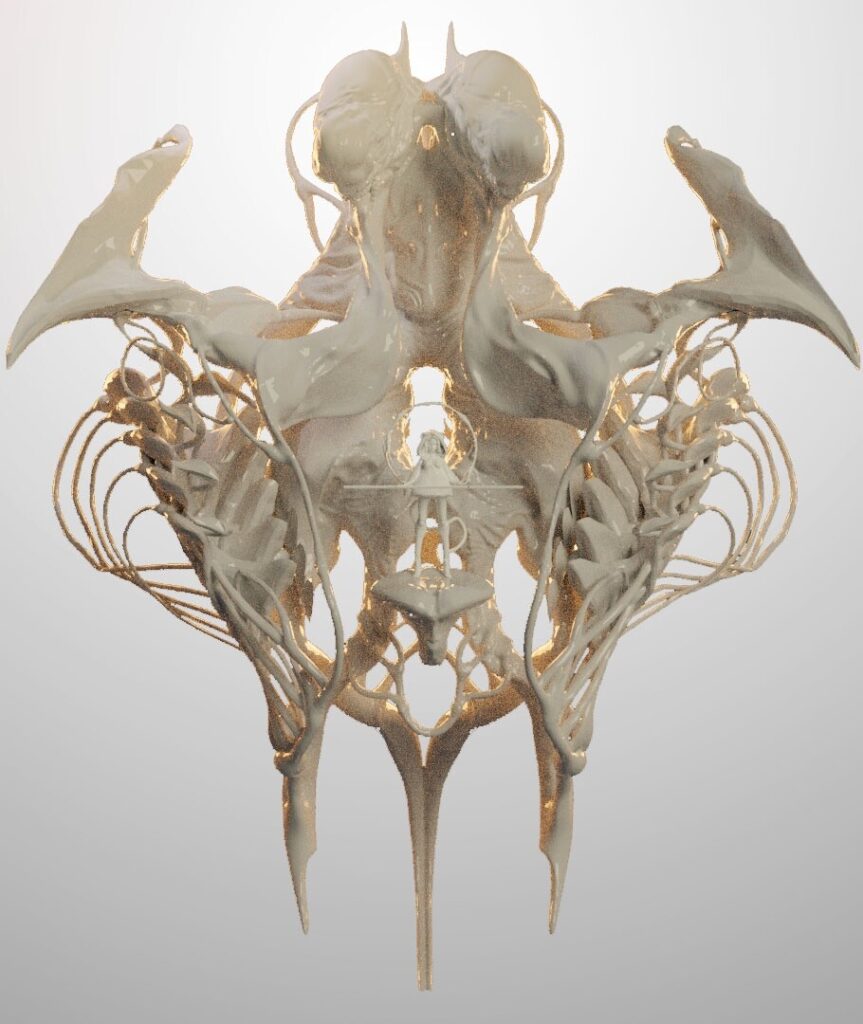
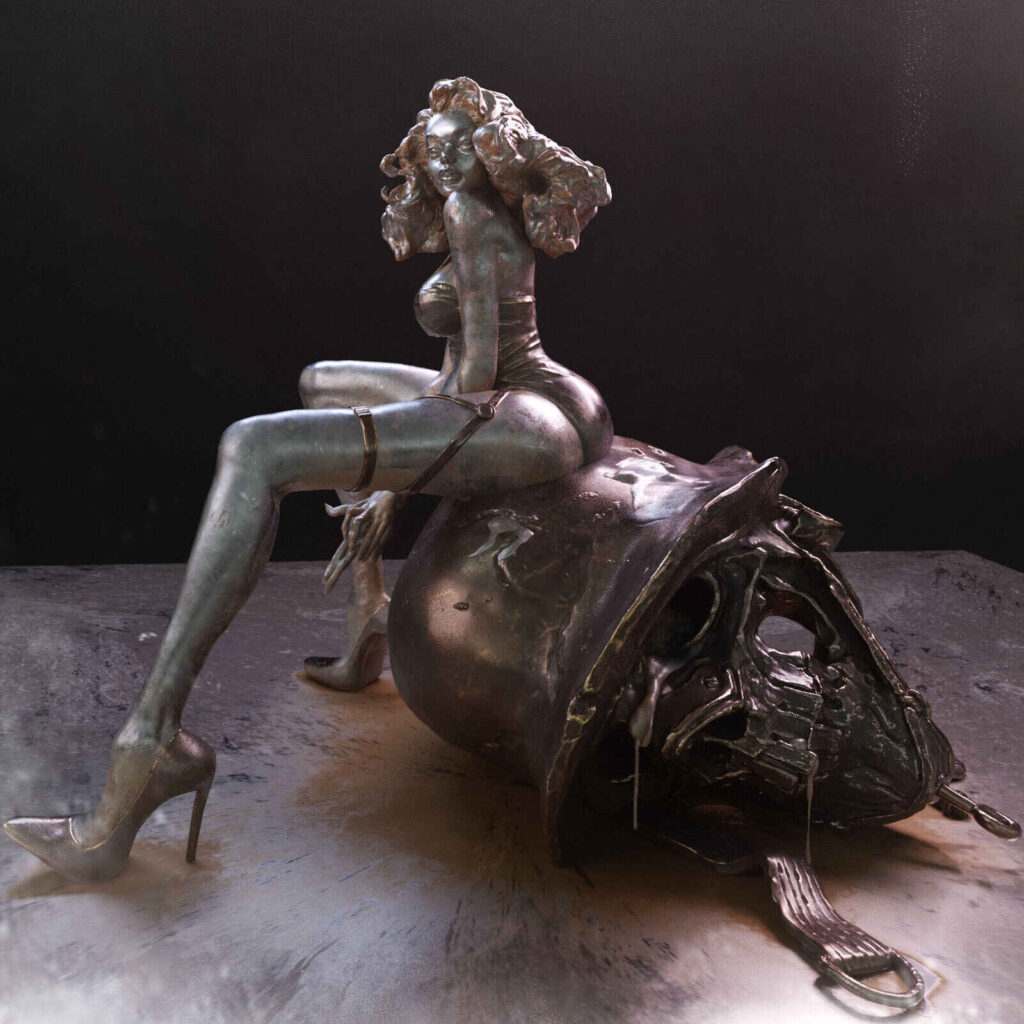
What was the process like for making “Metamorphosis”? How long did it take to create such an elaborate piece?
The earliest source of inspiration for this artwork was a tiger. It happened to be the Year of the Tiger at the time, and I wanted to create an art piece centered around this theme. I then began to draw inspiration from a wide range of sources, including music, movies, and art books I had collected over the years. I created numerous sketches. The drawings I made for sculpture are quite different from my other painting; they tend to be very rough, as I want to leave the joy of shaping and the element of the unknown for the sculpting process.
I used digital sculpting to meticulously carve out the animal details of the tiger and capture the intricate patterns of its soaring movement. This allowed me to achieve a level of delicacy and lightness that might be challenging to attain with traditional materials like clay at the same scale. The sculpting process took approximately 2 to 4 months to complete.
For colouring, I used traditional Japanese painting materials. These pigments are unique because they are entirely derived from natural minerals, resulting in a distinct and elegant luster and color. Since the sculpture itself is quite small, I intentionally chose larger pigment particles, which gave it a primitive and coarse texture, contrasting interestingly with the delicacy and fluidity of the sculpture’s form on different levels.
This was something I didn’t initially anticipate in creating this artwork, as my process for any piece is never exactly the same; I’m always experimenting with new elements. The colouring process was intermittent and lasted for over a month.
What were the most challenging and rewarding aspects of creating “Metamorphosis”?
The biggest challenge in creating this artwork was that it was my first attempt at using traditional Japanese pigments on a sculpture that integrated digital sculpting techniques. As far as I know, this piece was among the first and perhaps the only one to try this approach. At the time, I happened to be studying Japanese painting, but I always find it difficult to resist applying newly acquired knowledge to unexpected places.
Japanese pigments are made from pure natural minerals, with natural animal glue used as a binder. The paper used in Japanese painting also has strict requirements and techniques. Additionally, as I wasn’t working on a flat canvas, controlling how the pigments flowed and integrating them into my expression posed a challenge.
Moreover, due to the larger pigment particles, applying them too thickly could potentially diminish the intricate details of the sculpture. So, combining these tools was a challenging task, and I experimented with various spray techniques and tools from different fields throughout the process.
On the flip side, my biggest reward from this endeavor was the exploration of a new method. During the production, I had valuable exchanges with artists from the Japanese painting department at Tokyo University of the Arts, which greatly enriched my experience.
Throughout my career, I’ve been challenging and pushing myself, never resting in my comfort zone and never getting too complacent with praise from others. Continuously trying new things may sometimes make me appear ignorant and impulsive, but it’s this attitude that keeps me approaching my art with the purity and curiosity of a child.
This sculpture is inspired by ancient myths from the Korean Peninsula, I’d love to hear more about your interest in the topic of ancient mythology and how it informed and inspired “Metamorphosis”.
I’ve always been very interested in the cultures of Japan, China, and Korea. Mythology serves as a medium within these cultures, often appearing in the form of stories and legends, reflecting the values and perspectives of the local people. The same animal may be given completely different attributes and symbolism. I believe that this multiplicity and subjectivity are some of the reasons why artists are fascinated by mythological themes.
In the creation myth of the Korean Peninsula, the bear and the tiger both undergo a transformation into human form while praying to the gods. The bear succeeds, while the tiger fails. As a result, in Korean mythology, the bear is seen as a symbol of femininity, fertility, and family. Here, the tiger is depicted as a primal, wild natural force, portrayed with bold, swirling strokes and intense contrasting colours.
During the transformation from animals to humans, there are softer, more fluid lines, suggesting a more intricate and evolved human nature. I used the shell of mythology and classical elements to try to depict the struggle within the human psyche to balance opposing forces — wildness and civilization, instinct and reason. This includes bold colours and forms, and I crafted many aspects of this piece as dualities, radiating strength through contrast and softness.
However, I also believe that these concepts are not mutually exclusive but rather intertwined, much like the yin and yang of Taoism. I hope this artwork can prompt viewers to contemplate their own inner duality and seek harmony within themselves.

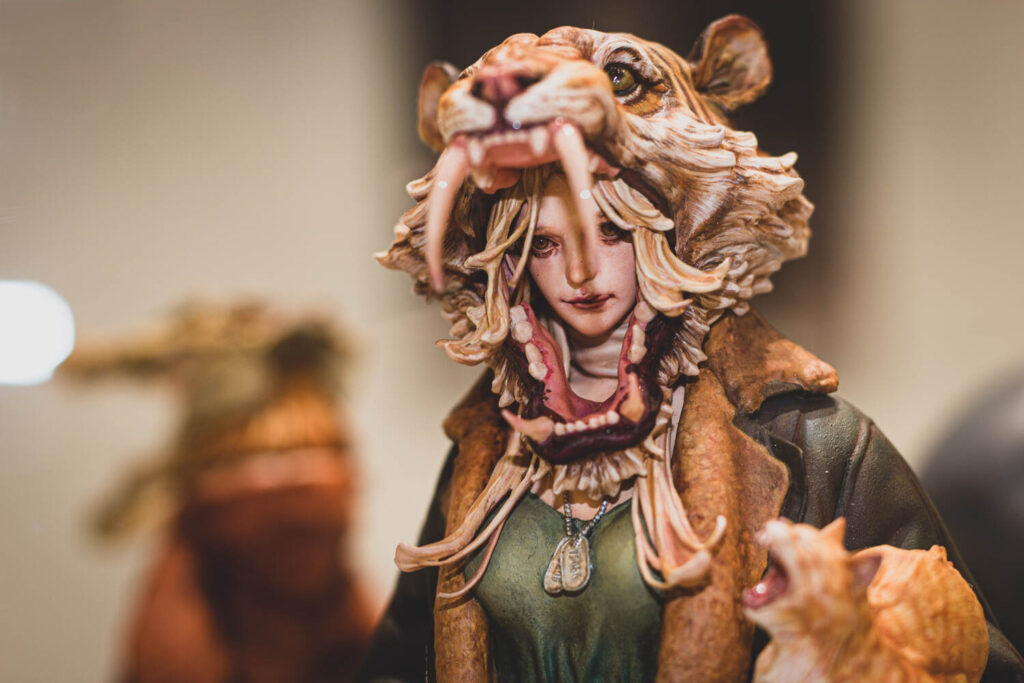
What do you feel you have gained from participating in the Beautiful Bizarre Magazine Art Prize?
First and foremost, receiving recognition in the field of expertise is a tremendous source of encouragement. While I have the passion to pursue more activities in the art world, not having formally studied in an art institution and primarily working in the entertainment industry such as gaming and film lead to confusion about how to showcase my creations and ideas to those outside my familiar industry. I also wonder whether my art style and approach will be appreciated and valued.
The entire process of creating the award-winning artwork, including the opportunity to exhibit it alongside other artists, has been a fantastic experience. It has provided me with a chance to connect with talented artists and institutions from different countries, exposing me to various perspectives and values. Learning from these experiences and accumulating new knowledge and skills will undoubtedly serve as valuable nourishment for creating even better work in the future.
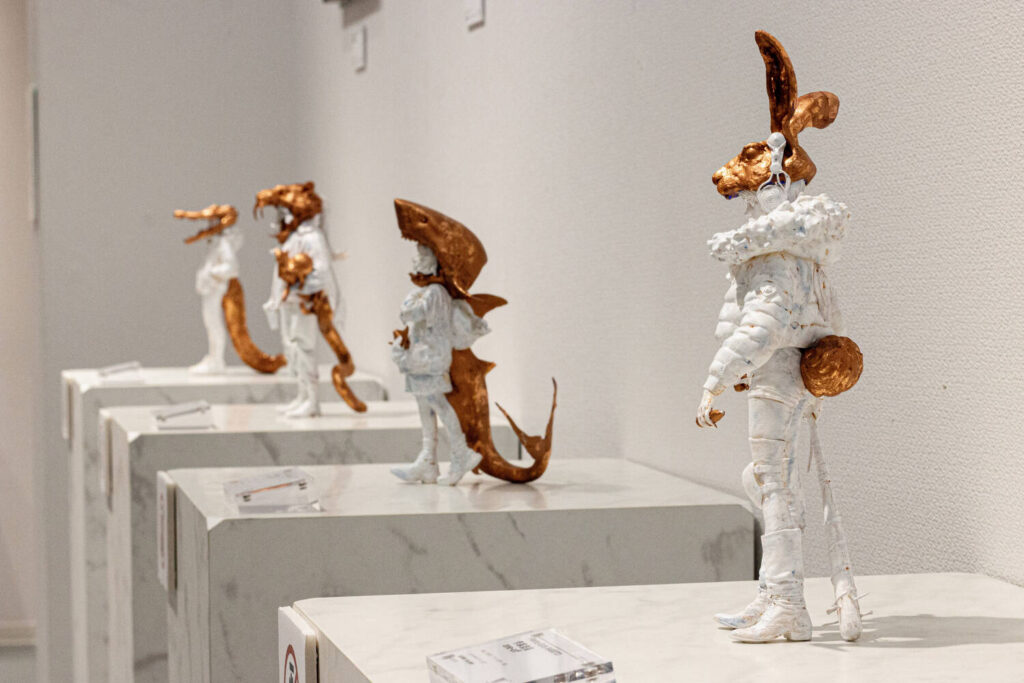
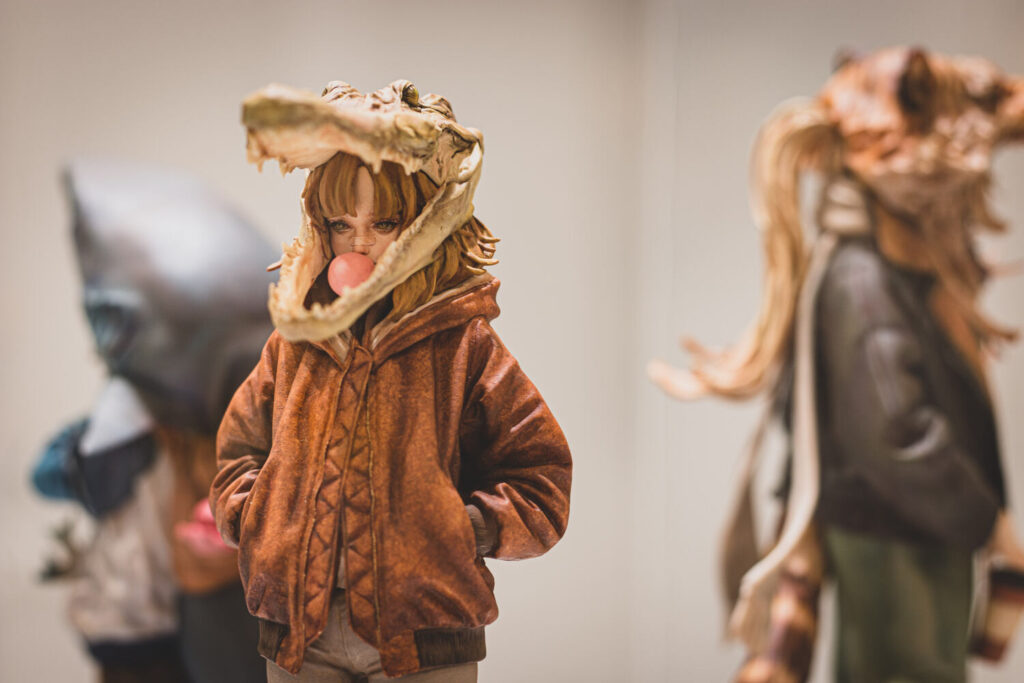
Would you recommend the Beautiful Bizarre Magazine Art Prize and encourage others to enter? If so, why?
Certainly, I would highly recommend it. I believe there are many young artists, including those venturing across different industries, who may find themselves in moments of uncertainty at various stages of their careers. The Beautiful Bizarre Magazine Art Prize is a unique and inclusive platform that also carries authority. They are incredibly generous in offering advice and providing a stage for young artists. I am truly grateful to the organizers for hosting such a wonderful event.
I feel that sculpture, in a way, is a combination of my love for painting and architecture. It’s like “painting in space” or “constructing with the instincts of painting.

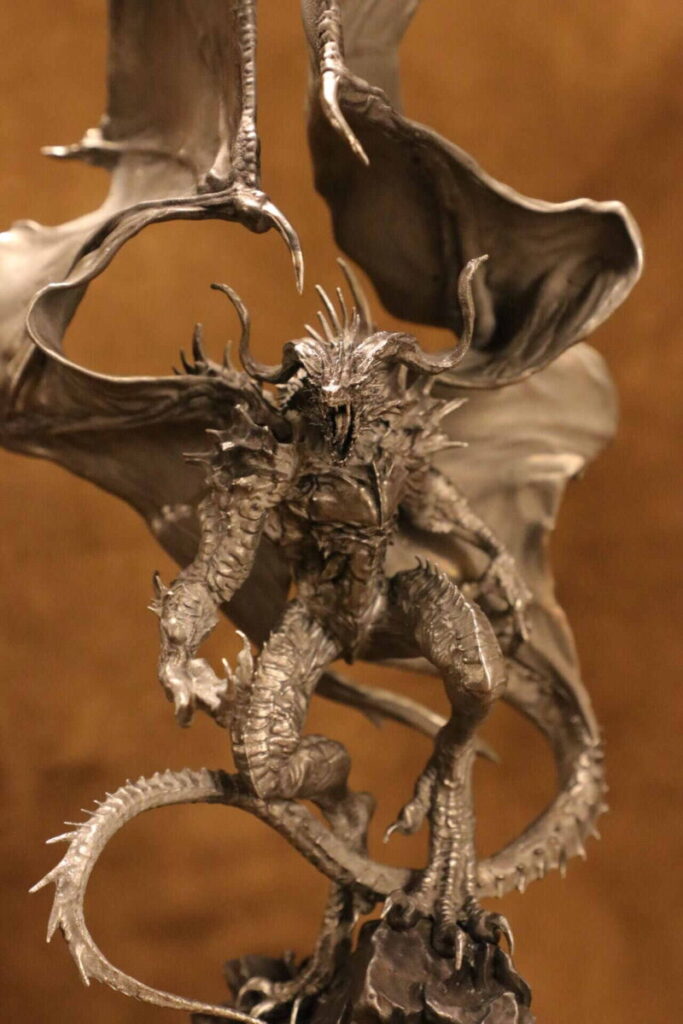
What advice would you give to aspiring artists?
If I could sum it up in one word, it would be “challenge.” Throughout my career, I’ve been challenging and pushing myself, never resting in my comfort zone and never getting too complacent with praise from others. Continuously trying new things may sometimes make me appear ignorant and impulsive, but it’s this attitude that keeps me approaching my art with the purity and curiosity of a child.
On the other hand, in this rapidly evolving era where technology and lifestyles change swiftly, the fields we were once familiar with, including various art forms, can blend, diverge, or be redefined over time. True style is gradually shaped and perfected through extensive experimentation and exploration. It’s about staying sensitive to the world as a perceptive creator, using all these experiences to mold your authentic self.
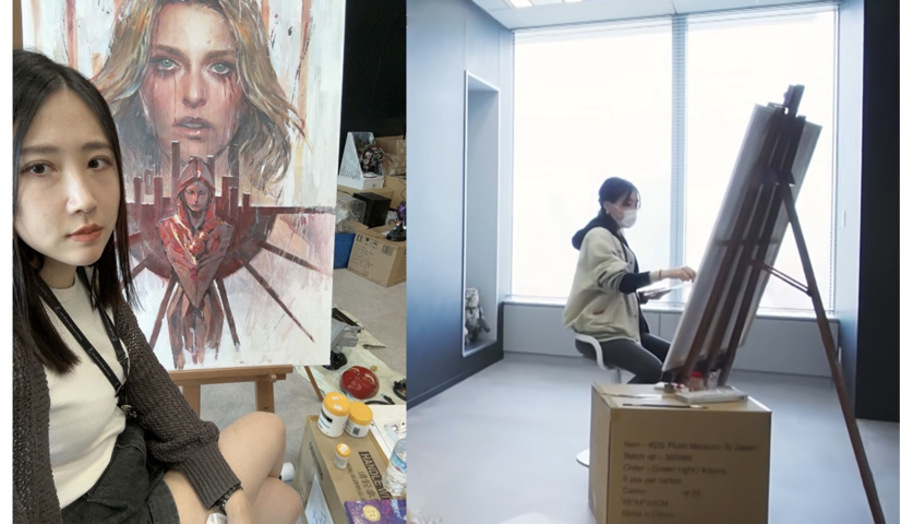
We always love learning about where artists make their magic. Can you tell us a bit about your studio space?
My digital workspace is in my apartment and consists of 2-3 monitors along with a tablet. When working with clay sculpture or using oil painting or Japanese painting pigments, I share a more spacious studio with my friends. Additionally, as a concept artist for Kojima Productions a renowned Japanese video game development studio, I create oil paintings and sculptures for our in-development games in office studio space in Tokyo.
The exciting news is that I am currently preparing to design my own residential space with an attached art studio in Tokyo. This will provide me with ample space to create larger art pieces in the future. It’s a rare opportunity for me to apply the architectural design skills I haven’t used since graduating, and I look forward to showcasing the completed building on my own website for everyone to see.



